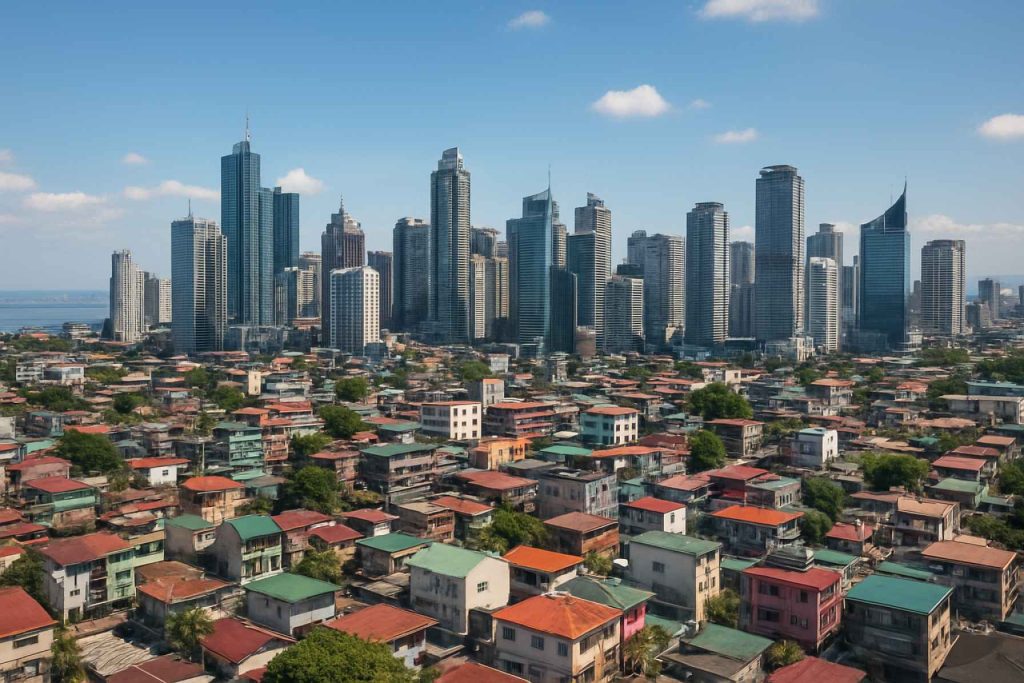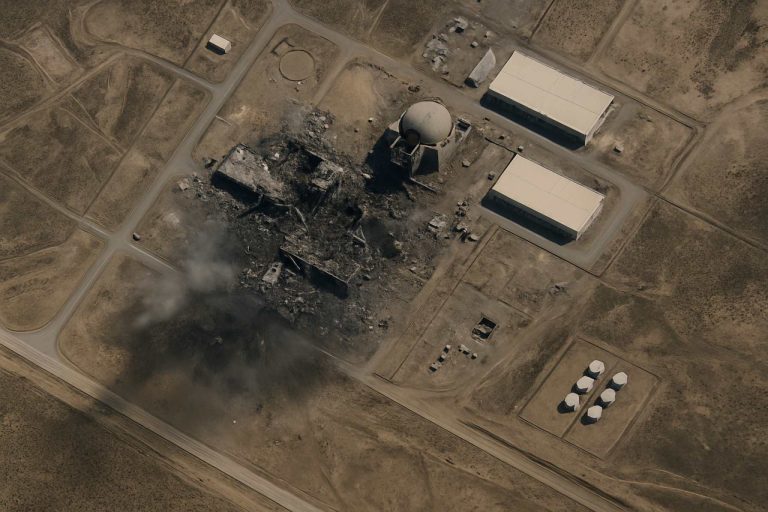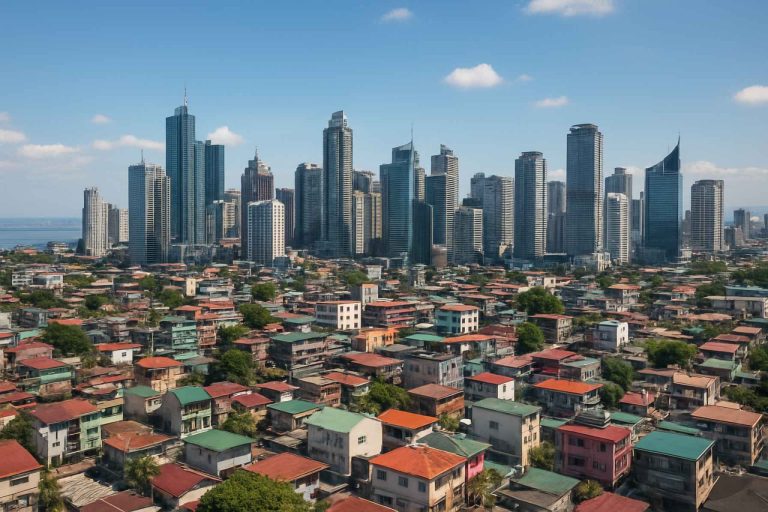
Inside Manila’s Real Estate Evolution: Surprising Shifts, Bold Predictions, and the Next Hotspots
- Market Overview: Key Drivers and Current Dynamics
- Technology Trends Shaping Manila’s Real Estate
- Competitive Landscape: Major Players and New Entrants
- Growth Forecasts: Projections and Investment Potential
- Regional Analysis: Neighborhoods to Watch and Local Highlights
- Future Outlook: What’s Next for Manila’s Property Sector
- Challenges & Opportunities: Navigating Risks and Unlocking Value
- Sources & References
“Manila’s real estate market in 2025 is a study in contrasts.” (source)
Market Overview: Key Drivers and Current Dynamics
The Manila real estate market is poised for a dynamic 2025, shaped by shifting demand, evolving urban priorities, and robust economic fundamentals. Despite global headwinds, the sector is demonstrating resilience, with several surprising trends and bold forecasts emerging for the year ahead.
- Resurgence of Residential Demand: After a pandemic-induced slowdown, residential property demand in Metro Manila is rebounding. According to Colliers Philippines, pre-selling condominium take-up in Metro Manila reached 11,700 units in Q1 2024, up 22% year-on-year. This momentum is expected to continue into 2025, driven by returning overseas Filipino workers (OFWs), a young urban population, and the normalization of hybrid work arrangements.
- Office Market Transformation: The office sector is adapting to new realities. While traditional BPO demand remains strong, there is a notable shift toward flexible workspaces and green-certified buildings. Vacancy rates are stabilizing, with Santos Knight Frank reporting a drop to 18.2% in Q1 2024 from 19.1% in the previous quarter. This trend is expected to continue as companies seek sustainable, tech-enabled office environments.
- Hot Neighborhoods to Watch: Emerging districts are capturing investor attention. Lamudi highlights areas such as Bridgetowne (Quezon City-Pasig), Bay City (Parañaque-Pasay), and the North Caloocan corridor as hotspots for both residential and mixed-use developments. Infrastructure projects like the Metro Manila Subway and North-South Commuter Railway are further boosting these locations’ appeal.
- Bold Forecasts for 2025: Analysts predict a 3-5% annual increase in residential property prices in prime locations, with luxury and mid-market segments leading the way (Colliers). Rental yields are also expected to improve as urban migration resumes and tourism recovers.
In summary, Manila’s real estate market in 2025 will be defined by renewed residential demand, adaptive office strategies, and the rise of new urban hotspots. Investors and homebuyers should watch for opportunities in emerging neighborhoods and sustainable developments as the city’s property landscape evolves.
Technology Trends Shaping Manila’s Real Estate
Manila’s real estate market is undergoing a rapid transformation, driven by technological innovation and shifting consumer preferences. As we look toward 2025, several key technology trends are poised to reshape the landscape, influencing everything from property development to buyer behavior and neighborhood desirability.
- Smart Buildings and Green Tech: Developers in Manila are increasingly integrating smart building technologies—such as IoT-enabled security, energy management systems, and touchless amenities—into new projects. This shift is partly in response to growing demand for sustainable and health-conscious living spaces. According to Colliers Philippines, green-certified office spaces in Metro Manila grew by 7% in 2023, and this trend is expected to accelerate as ESG (Environmental, Social, and Governance) standards become a priority for both investors and tenants.
- Proptech Platforms and Virtual Transactions: The adoption of property technology (proptech) is streamlining the buying, selling, and leasing process. Virtual tours, AI-powered property matching, and blockchain-based transactions are making real estate more accessible and transparent. Platforms like Lamudi report a surge in online property searches and digital transactions, with over 60% of buyers now starting their home search online.
- Flexible Workspaces and Hybrid Living: The rise of remote and hybrid work is fueling demand for flexible residential and commercial spaces. Co-living and co-working developments are gaining traction, particularly in emerging business districts. Santos Knight Frank notes that flexible workspace supply in Metro Manila is projected to grow by 15% in 2024, with further expansion expected in 2025.
- Hot Neighborhoods to Watch: Tech-driven growth is spotlighting new hotspots beyond traditional CBDs. Areas like Bonifacio Global City (BGC), Ortigas East, and the Bay Area are attracting both local and foreign investors due to their smart infrastructure and proximity to innovation hubs. The Philippine Star highlights these neighborhoods as top picks for 2025, citing robust infrastructure projects and rising property values.
In summary, Manila’s real estate market in 2025 will be defined by digital transformation, sustainability, and the emergence of tech-forward neighborhoods—offering both challenges and opportunities for investors and homebuyers alike.
Competitive Landscape: Major Players and New Entrants
The Manila real estate market is undergoing rapid transformation as it heads into 2025, with both established developers and agile new entrants shaping the competitive landscape. The sector is buoyed by robust economic growth, a young population, and a resurgence in foreign investment, all of which are fueling demand for residential, commercial, and mixed-use developments.
- Major Players: Industry giants such as Ayala Land, Megaworld Corporation, SM Prime Holdings, and Filinvest Land continue to dominate the market. These firms are leveraging their extensive land banks and financial muscle to launch large-scale projects, particularly in emerging business districts like Bonifacio Global City (BGC), Ortigas Center, and the Bay Area. According to Colliers Philippines, these developers are focusing on integrated communities that blend residential, office, and retail spaces, catering to the evolving preferences of urban dwellers.
- New Entrants and Disruptors: The market is also witnessing the rise of new players such as DMCI Homes and Empire East, who are targeting the mid-market and affordable housing segments. These companies are capitalizing on the government’s push for mass housing and the growing demand from young professionals and overseas Filipino workers (OFWs). Additionally, proptech startups like Lamudi and Dot Property are disrupting traditional sales channels by offering digital platforms for property search and transactions.
- Hot Neighborhoods to Watch: In 2025, neighborhoods such as BGC, Rockwell Center, and Vertis North are expected to see heightened activity, driven by infrastructure improvements and lifestyle upgrades. The Bay Area, in particular, is emerging as a hotspot for both residential and office developments, with vacancy rates dropping and rental yields rising (Santos Knight Frank).
As Manila’s real estate market evolves, the interplay between established conglomerates and innovative newcomers is set to intensify competition, drive innovation, and reshape the city’s urban fabric in 2025 and beyond.
Growth Forecasts: Projections and Investment Potential
The Manila real estate market is poised for dynamic growth in 2025, driven by robust economic recovery, infrastructure expansion, and evolving consumer preferences. According to Colliers Philippines, the Metro Manila property sector is expected to rebound strongly, with residential, office, and retail segments all showing positive momentum.
- Residential Surge: Demand for mid- to high-end condominiums is projected to rise by 8-10% in 2025, fueled by returning overseas Filipino workers and a growing young professional demographic. Notably, pre-selling activities in key business districts such as Bonifacio Global City (BGC) and Ortigas Center are accelerating, with prices forecasted to increase by 5-7% year-on-year (Lamudi).
- Office Market Resilience: The office sector is set for a modest recovery, with vacancy rates expected to drop to 16% by end-2025 from a high of 18% in 2023. The IT-BPM and flexible workspace sectors are leading the resurgence, particularly in Makati and Taguig (Cushman & Wakefield).
- Retail and Mixed-Use Developments: Retail spaces are experiencing a revival, with foot traffic in malls and mixed-use developments returning to pre-pandemic levels. New lifestyle hubs in Quezon City and Pasig are attracting both local and foreign investors, signaling renewed confidence in the sector (Knight Frank).
Hot Neighborhoods to Watch: BGC remains a top investment destination, but emerging areas like Arca South, Bridgetowne, and the Bay Area are gaining traction due to major infrastructure projects such as the Metro Manila Subway and North-South Commuter Railway. These developments are expected to boost property values and rental yields in adjacent neighborhoods (BusinessMirror).
Overall, Manila’s real estate market in 2025 offers compelling investment potential, with bold forecasts pointing to sustained growth, especially in transit-oriented and mixed-use communities. Investors are advised to monitor infrastructure rollouts and shifting demand patterns to capitalize on emerging opportunities.
Regional Analysis: Neighborhoods to Watch and Local Highlights
The Manila real estate market is poised for dynamic shifts in 2025, with several neighborhoods emerging as hotspots for both investors and homebuyers. Driven by infrastructure projects, evolving lifestyle preferences, and robust economic activity, the city’s property landscape is set for transformation. Here’s a closer look at the neighborhoods to watch and the local highlights shaping Manila’s real estate future.
- Bonifacio Global City (BGC): BGC continues to be a magnet for premium developments, with residential prices rising by 6.5% year-on-year in 2024 (Colliers Philippines). The area’s appeal is bolstered by new office towers, luxury condos, and the completion of the BGC-Ortigas Center Link Road, which is expected to further enhance connectivity and property values in 2025.
- Makati Central Business District: Makati remains a resilient market, with vacancy rates dropping to 15.2% in early 2024 and rental rates stabilizing (Santos Knight Frank). The city’s push for green buildings and mixed-use developments is attracting both multinational firms and young professionals, making it a top choice for urban living.
- Manila Bay Area: The Bay Area is experiencing a surge in residential and commercial projects, driven by the Entertainment City complex and ongoing reclamation initiatives. Analysts forecast a 7% increase in property values in 2025, as the area becomes a hub for leisure, gaming, and tourism (Lamudi).
- Quezon City: With the completion of the Metro Manila Subway and MRT-7 projects on the horizon, Quezon City is set to benefit from improved accessibility. The city is seeing a wave of mid-market and upscale residential launches, with developers targeting young families and professionals seeking value and convenience (Colliers Philippines).
- San Juan and Mandaluyong: These centrally located cities are gaining traction due to their proximity to major business districts and new infrastructure. Boutique condo projects and townhouses are in high demand, with prices projected to rise by 5% in 2025 (Lamudi).
Overall, Manila’s real estate market in 2025 will be shaped by infrastructure upgrades, lifestyle-driven demand, and the continued rise of mixed-use communities. Investors and buyers should keep a close eye on these neighborhoods as they offer both growth potential and vibrant urban living.
Future Outlook: What’s Next for Manila’s Property Sector
The outlook for Manila’s real estate sector in 2025 is marked by dynamic shifts, driven by evolving consumer preferences, infrastructure projects, and macroeconomic factors. Analysts predict a year of both challenges and opportunities, with several surprising trends and bold forecasts shaping the market landscape.
- Resurgence of Residential Demand: After a period of subdued activity, residential demand in Metro Manila is expected to rebound in 2025. According to Colliers Philippines, pre-selling condominium take-up could reach 20,000 to 22,000 units, buoyed by returning overseas Filipino workers and a young, urbanizing population.
- Office Market Evolution: The office sector is adapting to hybrid work models. While traditional demand from BPOs remains strong, there’s a growing appetite for flexible workspaces and green-certified buildings. Vacancy rates are projected to stabilize at around 18% as new supply tapers and occupier confidence returns (Cushman & Wakefield).
- Hot Neighborhoods to Watch: Emerging districts such as Bridgetowne in Quezon City, Bay City in Pasay, and the North Caloocan corridor are attracting both investors and end-users. These areas benefit from proximity to new infrastructure like the Metro Manila Subway and North-South Commuter Railway (Lamudi).
- Luxury and Green Developments: There’s a notable uptick in demand for luxury residences and sustainable developments. Developers are integrating smart home features, wellness amenities, and eco-friendly designs to cater to affluent buyers and environmentally conscious millennials (Santos Knight Frank).
- Investment Hotspots: Investors are eyeing mixed-use townships and transit-oriented developments, anticipating capital appreciation as infrastructure projects near completion. Rental yields in select districts are forecast to improve, especially in Makati, BGC, and Ortigas, where demand for high-quality rentals is rising.
Overall, Manila’s property sector in 2025 is poised for a measured recovery, with innovation, sustainability, and connectivity as key drivers. Stakeholders should monitor policy changes, interest rate movements, and infrastructure rollouts to capitalize on emerging opportunities in this fast-evolving market.
Challenges & Opportunities: Navigating Risks and Unlocking Value
The Manila real estate market is poised for a dynamic 2025, shaped by shifting economic conditions, evolving consumer preferences, and government initiatives. As the Philippines rebounds from pandemic disruptions, both challenges and opportunities are emerging for investors, developers, and homebuyers.
-
Challenges: Rising Costs and Regulatory Hurdles
- Construction costs in Metro Manila have surged by 8-10% year-on-year, driven by inflation and supply chain disruptions (BusinessWorld).
- Land prices in prime districts like Makati and Bonifacio Global City (BGC) continue to climb, with BGC residential land averaging PHP 1.2 million per sqm in 2024 (Colliers Philippines).
- Developers face stricter compliance with environmental and zoning regulations, potentially slowing project approvals and increasing costs.
-
Opportunities: New Demand Drivers and Emerging Hotspots
- Hybrid work trends are fueling demand for flexible living spaces and co-living developments, especially in Quezon City and Mandaluyong (Lamudi).
- Infrastructure projects like the Metro Manila Subway and North-South Commuter Railway are unlocking value in previously overlooked neighborhoods such as Valenzuela, Caloocan, and San Juan (DPWH).
- Foreign investment is expected to rise, following the relaxation of foreign ownership rules in select property segments (Philstar).
-
Bold Forecasts & Hot Neighborhoods
- Colliers projects a 5-7% increase in residential property prices in Metro Manila for 2025, with luxury and mid-market segments leading growth (Colliers Philippines).
- Hot neighborhoods to watch include Ortigas East, Bay City, and the up-and-coming Bridgetowne district, all benefiting from new mixed-use developments and improved connectivity.
- Green and sustainable buildings are gaining traction, with demand for LEED-certified projects expected to double by 2025.
In summary, while Manila’s real estate sector faces headwinds from rising costs and regulatory changes, the market’s resilience, infrastructure upgrades, and shifting lifestyle trends are creating fresh opportunities for those ready to adapt and innovate.
Sources & References
- Manila Real Estate 2025: Surprising Trends, Bold Forecasts & Hot Neighborhoods to Watch
- Santos Knight Frank
- Vertis North
- Megaworld Corporation
- SM Prime Holdings
- Filinvest Land
- DMCI Homes
- Empire East
- BGC
- Cushman & Wakefield
- Knight Frank
- BusinessMirror
- BusinessWorld
- DPWH



